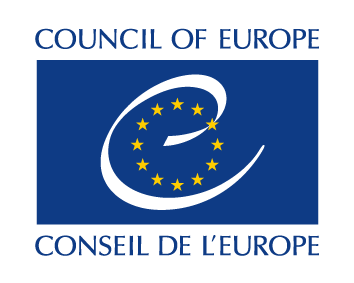3 Billion Trees - Can the EU do it?
What is the 3 Billion Tree Pledge?
3 billion trees – a big number, a big promise. As part of the EU Biodiversity Strategy for 2030, the European Union committed to planting 3 billion additional trees by 2030. Without a doubt, trees are incredibly important to our natural environment – they provide crucial roles in various ecosystems, are home to many diverse species, absorb carbon, improve human health and well-being and serve essential roles in flood control and water filtration. This EU pledge plans to do just that. By increasing forest cover in the EU, “in full respect of ecological principles: the right tree species in forests, agricultural areas, urban and peri-urban areas and along infrastructure corridors”. Is this promise too good to be true?
The forest expansion rate in the EU has been slow in recent years, and a goal of 3 billion additional trees would double the total forest expansion rate in Europe between 2005 and 2020. It is currently estimated that in the EU, 300 million trees are grown annually. Currently, as of October 2022, the activity under the pledge has resulted in 6,787,146 new trees have been planted, carried out in all 27 countries with help from 28 organisations such as Land Life and ReforestAction.
Afforestation – a solution for the biodiversity and climate crisis?
Afforestation and reforestation are not new policies, humans have been planting trees for centuries. There is a consensus that trees and forests are worthwhile and there is a policy to support it. The EU itself has seen the afforestation of approximately one million hectares of agricultural land between 1994-1999, and 700 hectares between 2000 and 2007. Many countries have afforestation policies in place. Canada’s Forest 2020 Plantation Development and Assessment Initiative, not dissimilar to this pledge, saw the plantation of 6000 hectares of forest and its success encouraged the government’s investment of $3.16 billion to plant 2 billion trees in ten years in 2020. Famously, the African Union put in place the Great Green Wall, an ambitious policy to help combat desertification, the AU has been planting a wall of trees to cover 100 million hectares of land and absorbs 250 million tonnes of carbon from the atmosphere. Other approaches have been taken – in 1981, China put in place a law which requires children over the age of 11 to plant a tree per year.
What is the impact on biodiversity…?
What does planting trees do? Firstly, forests are important loci for biodiversity, representing often dense ecosystems with diverse plants and animals. Forests are thought to be important habitats, “home to 80% of the world’s biodiversity on land”. Planting more trees in forested areas or reforesting struggling forest ecosystems can have many important impacts. Forests are important habitats and maintaining their integrity through reforestation can ensure that wildlife remains in the region and isn’t forced to relocate. Increased forest density and diversity have also been linked to an increase in species richness for fungi and soil invertebrates. Moreover, tree plantation in urban areas (included in the 3 Billion Trees Pledge) has been studied as a positive act that attracts and shelters wildlife species, particularly birds and insects, and provides shade.
Forests are also key for soil quality and resilience. A lack of trees has been seen to cause a sensibility to soil erosion. Trees’ overlapping and interconnected roots provide a structural role in the topsoil layer of land. This topsoil layer can erode (runoff) without trees in place, which in turn risks the land becoming infertile and inhospitable to the plantation. Moreover, afforestation has been found to improve watersheds, which are key for water supply.
.. and for the climate?
The benefits don’t stop there – trees can help us in the fight against climate change. Carbon sequestration is a bit of a buzzword in the environmental sphere but it shouldn’t be dismissed. Restoring forests and increasing generally the number of plants on our earth has the potential to absorb and store large amounts of carbon – these are known as carbon sinks. Through photosynthesis, carbon dioxide is absorbed by trees, and they in turn release oxygen. The absorbed carbon is turned to sugar which is used in the wood, branches and roots, meaning that it remains in the standing tree. Even once the tree dies, it takes years for the carbon to break down, apart from when leaves decompose and when carbon is released more quickly. The age of the tree impacts its carbon sequestration aptitude, with middle-aged trees being the most effective and young trees the least effective due to size. Overall, uneven-aged forests are the best at carbon capture – meaning that planting trees in strategic places would allow for uneven-aged forests and increase the potential for carbon sequestration.
For this reason, afforestation and reforestation are seen as one of the great ‘natural solutions’ for climate mitigation. Policymakers believe these forms of ecosystem services are probable to be of rising importance and relevance due to their impact both for mitigation and adaptation to climate change, and general benefits to our environment. This potential has been recognised internationally with the Paris Agreement emphasising the importance of carbon sinks in order to achieve a balance between emissions and removals. Carbon sinks are a key part of EU environmental policy with recent targets set to increase carbon sinks by 15% compared to today in the land use and forestry sector.
Overall, the pledge could be very powerful in this regard: 3 billion trees covering 2 million ha could remove up to 4 million tonnes of CO2 from the atmosphere already by 2030, and as much as 15 million tonnes by 2050, according to the European Commission. The decision to encourage tree planting, therefore, seems a logical one, both in terms of benefits for climate and biodiversity.
The right tree, in the right place, for the right reason
However, as with most environmental solutions, it is not as clear-cut as it seems.
Simply planting trees isn’t a be-all and end-all solution to our dual crisis.
Virginijus Sinkevičius, the EU’s environment commissioner, commented: “That’s our promise. To plant three billion trees. The right trees, in the right place, for the right reason” – this second half is essential, we can’t simply plant any tree anywhere and assume it is beneficial. It must be done properly – is the 3 billion tree pledge ready for that?
The pledge, in all its ambition, has limitations. With 8 years left, there are still 2.993 billion trees to be planted and yet, given the voluntary nature of the pledge, it is unclear how the number will be reached. The pledge came along with a roadmap which primarily relies on monitoring through the Forest Information System for Europe and the creation of a new app MapMyTree so citizens can upload and monitor their trees and progress. Anyone can plant a tree – but it is essential that native tree species to the area are planted, and that it is done with care and understanding of the surrounding ecosystem.
Avoiding Monocultures
The pledge is ambitious – asking for huge amounts of trees to be planted – but it cannot be stressed enough that monocultures cannot be a solution to short-cut to the end-goal of 3 billion trees. Monocultures were conceptualised as a way to produce as much wood “in as little time as possible and, technically in the simplest manner” in the 18th and 19th centuries in Europe as a response to timber shortages. Their simplicity is at odds with the necessary complexity of biodiversity. In setting high targets for tree plantation, there is the potential that concerned actors would cut corners and plant large plantations of similar species – not a sustainable approach to forestry. As Friends of the Earth International, World Rainforest Movement and FERN, said monoculture tree plantations done in the guise of carbon sinks would “have to be large-scale and thus even more destructive — are exactly the opposite of “sustainable development”. Ecosystem uniformity means that there is a lack of genetic diversity as well as typically close planting, making monoculture plantations vulnerable to pests and diseases.
Where’s the money?
Another issue with the pledge is funding. The reality is that to achieve such an ambitious goal as 3 billion trees, there will be a need for monetary incentives. In the EU’s public consultation on the issue, a main key challenge in terms of planting additional trees was identified: “financial resources/loss of farmland value after conversion to forest land”, an issue raised by 62.88% of respondents. It seems that this pledge is relying on the use of pre-existing EU and national funds and monetary mechanisms such as Finland’s Metso Programme which pays private forest owners to keep some of their lands for biodiversity purposes. In the EU, the Common Agricultural Policy (CAP) helps provide financial support for forests and forest management through national Rural Development Programmes, though the use of these funds has not been achieved to their fullest extent, perhaps due to a lack of awareness of how to apply or implement forest-based adaptation activities. From 2014 to 2020, 27% of these CAP forestry measures went to afforestation.
Unfortunately, we cannot simply hope that 3 billion trees will be planted by pure goodwill and altruism – as Carlos Manuel Rodríguez, Costa Rica’s minister for the environment and energy, acknowledged in relation to Costa Rica’s afforestation approach: “we have learned that the pocket is the quickest way to the heart ”. Instead, this policy must be paired with robust financial support, aid and access.
Is there a risk of greenwashing in all of this?
Tree planting has become perceived as an easy solution to climate change due to its carbon sequestration potential – it has become the token action in order to offset carbon emissions through offset schemes, a form of commercialised climate mitigation which has been often awarded the label of greenwashing. Oil and gas companies have invested in tree-planting to offset emissions, such as Total announcing a $100 million investment in 2019. Tree-planting has been picked up by politicians across the political spectrum due to its feasibility, with even right-wing U.S. former president Donald Trump supporting the proposition of a ‘Trillion Trees Act’. This republican move was recognised as a way to satisfy voter demand for climate action without having to curtail emissions and the interests of the fossil fuel lobby. This encapsulates the key issue at hand: planting trees and carbon sequestration shouldn’t be a replacement for mitigation measures and reduction of greenhouse gas emissions. Indeed, Greenpeace described this EU initiative as simply “feel good”, that overall “lack(s) real action to restore forests and expand clean energy”, representative of “not only (…) a dangerous distraction from the climate crisis, but represents logging industry greenwashing.” Principally, Sini Eräjää, Greenpeace EU forest campaigner, summarised it as: “the potential climate and biodiversity benefits to planting trees are limited, but the risks of greenwashing are endless“. Overall, it is clear, the 3 billion trees pledge should be understood as one policy tool amongst many to promote tree planting and help Europe’s climate and biodiversity issues. Indeed, it is simply one of the measures of the EU Biodiversity Strategy for 2030.
To plant or not to plant?
2022 has ended, leaving 7 years for the implementation of the 3 billion trees goal and yet the structure in place to support it and allow for its long-term success seems to be lacking. Overall, as was mentioned in reaction to the press release for the 3 Billion Trees Pledge, “in terms of numbers alone, the pledge has raised eyebrows”. 3 billion trees is a very ambitious goal, and we are currently only a tiny fraction of the way there. Hopefully the remaining 2.993 billion trees to be planted will indeed be done with the right trees in the right place with the right support.
3 Billion Trees – Can the EU do it?
https://yeenet.eu/wp-content/uploads/2023/01/A-critical-look-at-footprint-compensation.png 540 540 YEE https://yeenet.eu/wp-content/uploads/2018/11/logo-yee-728x1030.png YEE2023-01-12 14:05:322023-06-23 09:18:423 Billion Trees - Can the EU do it? The Earth is burning, the COP is drowning
After a hot summer, you’d think the next COP would finally be the one for action, but the negotiations are stalling. We, the young observers of the international climate negotiations, reveal to you the hopeless backstage of this summit’s preparation. There is an urgent need to reform this institution, which remains fundamental in the fight against climate change. We propose the establishment of
a Global Citizens’ Climate Convention.
Written by Lou Collin and Thomas Reboul, this paper benefited from crucial contributions from Anna Antraygues.
Translated from the French original by Lou Collin.
After our first experience of international climate negotiations at the United Nations campus in Bonn, we came back with a bitter taste. While we had the honor of playing the role of young observers at the 56th session of the United Nations Framework Convention on Climate Change (UNFCCC) “implementation” negotiations, we also and above all had the regret of attending a bad play bringing together 198 countries known as “the Parties”. Large, sanitized rooms serve as the stage and the program is always the same. The (non)text machine is launched, fuelled by a ballet of verbal negotiations strictly codified by the UNFCCC to find agreements, present objectives and action plans that are, on paper, ever more audacious. As for their implementation, the Global Assessment scheduled for COP28 should shed light on the extent to which countries are lagging behind in meeting their targets.
In between ‘working’ sessions, a participant who started going to UNFCCC events at COP2 warned us: ‘I haven’t been to the negotiations for years and years. They will never lead to anything concrete. The most interesting thing to do here is outside the working rooms. This is the international climate fair, an invaluable place to find new allies and promising projects to try to mitigate the damage. Indeed, what happens in the negotiating rooms is disconcerting. The will of the nations, which can be measured by the speed and quality of the discussions, is inversely proportional to the climate emergency. Some delegations, often well-funded, from the so-called “developed” or fossil fuel exporting countries are meticulously sinking progress that could help them meet their 2015 Paris commitments. Meanwhile, the less wealthy countries and those most vulnerable to the consequences of climate change cannot follow all the negotiations: small teams due to poor resources, lack of trained negotiators, difficulties linked to master English, the technical UN language, etc. In addition, there are appalling visa problems that prevent delegations, observers and indigenous communities from arriving in time in the country of the negotiations. It is difficult to negotiate when you cannot travel to the country where the talks are taking place…
We also question the slowness of the UN process. Discussions very quickly move away from the substantive issues to argue about the progress of the negotiation, the format of the document, whether or not to display the text under NBC 1 discussion, the placement of punctuation, etc. All too often, therefore, we found ourselves faced with debates on the form of a text, emptied of its initial substance. Entire passages are discussed at length and then finally excluded if a consensus is not reached. Indeed, with the principle of unanimity that reigns in these negotiating forums, as soon as one Party opposes a term, the machine breaks down. Thus, on several occasions, the Parties only agree on the fact that they did not agree.
In rare working sessions, we have the right to speak. We have taken advantage of this to denounce the Parties’ desire to turn land, forests and oceans into economic assets. For example, during the first “dialogue” on oceans and climate change, which featured four hours of self-congratulatory statements by the Parties, one of the signatories of this forum called on the assembly to address issues that have been avoided until now: overfishing and deep-sea trawling. This appeal, as well as the one on the need to develop truly protected maritime areas, without industrial fishing, remained unanswered. Behind the scenes, a delegate from a country with significant fisheries resources, although silent during the dialogue, came to greet the intervention at the end of the session. On the other hand, the delegation from another European country revealed its unease at the non-existent position of the European Union on these issues.
In the end, we sensed a conformism, even apathy, on the part of some delegations in the face of our sometimes disturbing questions. The demands of countries suffering the consequences of climate change today are often ignored. Elements of language and rhetorical pirouettes sprinkled with economic justifications and technological solutions are all techniques that prevent substantive debates and allow the positions chosen by governments to be maintained. These discussions give the impression of a profound disconnection from reality and show the deleterious effects of the structure of international climate negotiations on ways of thinking about and responding to systemic problems.
These are our worrying observations. Unfortunately, the international community is currently relying in part on this mode of operation to reverse the curve of greenhouse gas emissions, the increase in the Earth’s average temperature, the decline in biodiversity, desertification, soil and water pollution, the destruction of primary forests, the frequency and intensity of extreme weather events, rising sea levels, etc. It is therefore urgent to rethink the environmental negotiations, which are vital for facing the climate crisis together. Young people and most NGOs are the only ones who can express themselves freely in these international debates. In Bonn, negotiators encouraged us to act, even though they are the ones at the negotiating table. In response to this invitation, the No Bullshit Coalition (NBC) has formed to sign this platform.
In addition to calling on the Parties to respect their promises of action and financing, here is our innovative recommendation to transform the functioning of the UNFCCC and, why not, try to save the COPs from drowning.
We propose the establishment of a new body within the UNFCCC processes, one that is decision-making, inclusive and citizen-based: the Global Citizens’ Climate Convention. Based on the principles of the French Citizens’ Climate Convention, it would bring together the world’s citizens in a representative and inclusive manner, for example with regard to indigenous representatives or NBC 2 The Non-Bullshit-Coalition is calling for ideas and recommendations from citizens to make this proposal a reality in order to save the COPs from sinking and to spare as many people and ecosystems as possible from the effects of climate change. If you have ideas on how to make this idea more concrete, debate with #NBC. Because the political and ruling class has given up on international climate negotiations, it’s time for citizens to take matters into their own hands.
The following organisations support it: ● Youth Environment Europe ● Avenir Climatique ● NOISE – Office of Governance and Inter-school Coordination ● NOISE – bureau de gouvernance et de coordination interécoles ● NOISE – AgroParisTech ● NOISE – ESSEC ● NOISE – ESCP ● Esp’r – HEC ● Les Agros à la COP – Agro ParisTech ● Dévelop’Ponts – Ponts ParisTech ● PC Durable – ESPCI ● Terre à Terre – ENS Saclay ● ENvertS – ENS de Lyon ● Make a difference (MAD) – Télécom Paris ● Écosyst’aime – ENSTA ● SupAero for Earth – SupAe ● Esp’r – Supoptique ● Eole – ESTP NBC ● Greensae – ENSAE ● Les ENSGagés – ENSG ● Assas Environnement NBC
The Earth is burning, the COP is drowning | Opinion article
https://yeenet.eu/wp-content/uploads/2022/11/The-Earth-is-burning1.png 540 540 YEE https://yeenet.eu/wp-content/uploads/2018/11/logo-yee-728x1030.png YEE2022-11-07 16:38:522023-06-23 09:18:58The Earth is burning, the COP is drowning | Opinion articleEnergy crisis and ecological emergency: is the REPowerEU plan THE solution?
Author: Mathilde Angeledei
Following the Russian invasion of Ukraine on the 24 of February 2022, the European Union faced a lack of gas distribution from Russia due to its support to Ukraine in the conflict. In reaction, the European Commission presented on March 8 the idea of coming up with a new project which aims at phasing out Russian fossil fuels and becoming more autonomous and independent regarding its energy supply and security. The plan was well received by EU leaders, who signed the Versailles declaration. They all agreed on the necessity to make the EU independent from Russian energy imports as soon as possible. On May 18, the Commission presented the REPowerEU plan and a week after the EU Energy Platform Task Force was established to secure alternative supplies.
The REPowerEU plan sets out a series of measures to rapidly reduce dependence on Russian energies by developing new energy cooperation agreements while investing in its own green transition.
The REPowerEU plan moves around three main areas:
Energy savings & reduction
Firstly, rather than waiting for an alternative solution to Russian energy, the EU prefers to count on energy savings from its own citizens and companies. Saving energy is the cheapest, safest and cleanest way to start the REPowerEU plan. The Commission wrote five simple daily life guidelines for EU citizens to follow:
- reducing heating temperatures or using less air-conditioning;
- using household appliances more efficiently;
- driving more economically;
- shifting to more public transport and active mobility;
- switching off the lights.
This is in line with the Commission’s objective to save around 13 bcm (billion cubic meters) of gas import by relying only on citizens’ and businesses’ responsible behavior.
In the long term, the Commission wants to boost industrial decarbonisation with €3 billion of frontloaded projects under the Innovation Fund and increase its ambition on energy savings by raising the EU-wide target on efficiency for 2030 from 9% to 13%.
On top of that, the EU demands a reduction emergency plan in case of gas supply disruption.
Alternative Energy Supplies
Secondly, the EU is working with international partners such as Israel and Egypt to find alternative energy supplies.
In the short term, the EU needs alternative supplies of gas, oil and coal and it is exploring the future of renewable hydrogen too.
In the long term, the EU will invest in an integrated and adapted gas and electricity infrastructure network. Moreover, the EU is currently writing a proposal to ensure the industry has access to critical raw materials.
Renewables
Thirdly, for the quantities the Member States still need to consume, the goal is to replace it with renewable energies. Many short and long-term measures have been proposed by the Commission.
Concerning short-term measures, the EU wants to increase the production of biomethane to save 17 bcm of gas imports and intensify solar and wind energy projects to save around 50 bcm of gas imports
Concerning long-term measures, the EU wants to modernize and simplify the legislation on renewable energy such as wind turbines and solar panels to enable a rapid issuance of building permits at low environmental risk. One of the most ambitious projects of the EU is to build a 17.5 GW hydrogen accelerator of electrolysers by 2025 to fuel the EU industry with homegrown production of 10 million tonnes of renewable hydrogen.
Why is the REPowerEU plan problematic?
If exiting from the Russian fossil fuels, gas and coal import is a necessity, should it be then done at all costs? This ambitious REPower EU plan will challenge the EU more than any other plan before. Indeed, this plan should combine a rapid transition to decarbonised energy with the building of strong partnerships between democratic countries while keeping energy affordable and secure for all citizens.
Switching off the light is common sense
The first objective of the project is saving energy, however, it seems clear that asking citizens to reduce energy is a tough job. Electric devices, especially cars and home technologies have increased this last decade, intensifying the need for energy. The solutions offered by the EU have already been implemented in people’s minds for years. Switching off the light when leaving a room is common sense, the same as using less air-conditioning. In the short term period, the EU needs to focus on industries and administration offices to save energy because they are the first consumers of energy and are most able to establish plans to reduce their energy consumption.
Renewable energy overlooked concerns
For many countries, it is still difficult to envisage such a quick transition at a time when energy prices are causing public anger. An abrupt halt to Russian imports combined with a forced installation of renewable energy facilities will make the working classes, already hard hit by the energy crisis, even more insecure.
The main objective of the EU is to become independent by investing in renewable energy. However, the creation of an energy park based solely on renewable energies requires several years of discussion and implementation. It will also require strong cooperation between the 27 states and huge financial investments.
In an amendment voted on June 27, the Energy minister of Member States backtracked on the development of renewable energies. The amendment removes the Commission’s push to increase the target for renewables in Europe’s energy mix to 45%, replacing it with the 40% target. This is below both the European Parliament’s and the European Commission’s positions, which both support the 45% target. The amendment also deleted the legal concept of “overriding public interest” for renewable energies. If adopted, the principle would help protect new renewable projects against legal challenges. Although unanimously welcomed, the REPower EU plan seems in fact creating dissension among the 27.
Another hurdle concerns renewable energy in the EU. When talking about renewable energy, the issue of rare metals is often overlooked. Europe is not a producer of these precious metals. A rapid and brutal change in its energy policy risks putting it once again at the mercy of the countries producing these rare metals, such as China.
Moreover, the environmental impact of the extraction of these rare metals is an issue. Often criticized, their extraction is a source of significant pollution for the ecosystems.
Human rights
Concerning the objective of diversifying imports of energy, the EU concluded new agreements with Egypt, regarding the import of hydrogen; and with Azerbaijan, regarding the import of fossil fuels and gas. If these agreements allow the EU to diversify our sources of energy, they are, however, rooted in cooperation with countries that are often criticized for their respect of human rights. For more than two years, the war between Armenia and Azerbaijan over the Upper Karaba has already caused several thousand deaths. If the EU wants to put an end to Russian energy imports for ethical reasons, it should not be at the expense of other populations.
In conclusion, the REPower EU Plan, born from a very laudable desire to move away from a harmful dependence on Russian energy, does not seem to take the necessary time to prepare a prosperous transition for all.
More than ever, European citizens must be aware of their energy impact and do their best to control and reduce it. Last but not least, governments should develop energy efficiency laws for businesses to initiate a general awareness movement to promote more efficient energy consumption.
Energy crisis and ecological emergency: is the REPowerEU plan THE solution?
https://yeenet.eu/wp-content/uploads/2022/11/Repower-EU-article.png 540 540 YEE https://yeenet.eu/wp-content/uploads/2018/11/logo-yee-728x1030.png YEE2022-11-03 12:03:162023-06-23 09:19:11Energy crisis and ecological emergency: is the REPowerEU plan THE solution?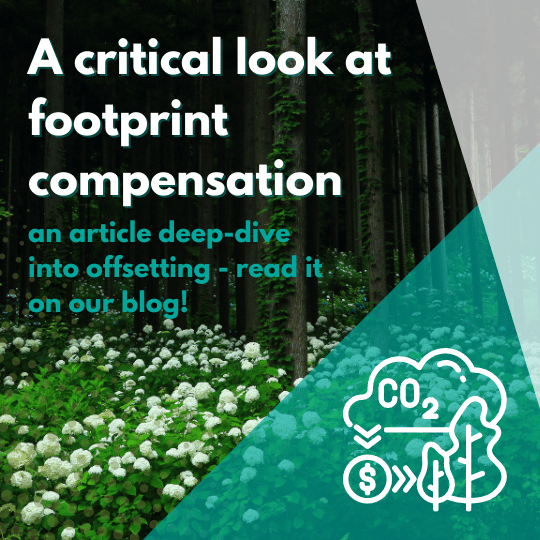
A critical look at footprint compensation | Article
https://yeenet.eu/wp-content/uploads/2022/10/A-critical-look-at-footprint-compensation.png 540 540 YEE https://yeenet.eu/wp-content/uploads/2018/11/logo-yee-728x1030.png YEE2022-10-07 11:40:242023-06-23 09:19:22A critical look at footprint compensation | Article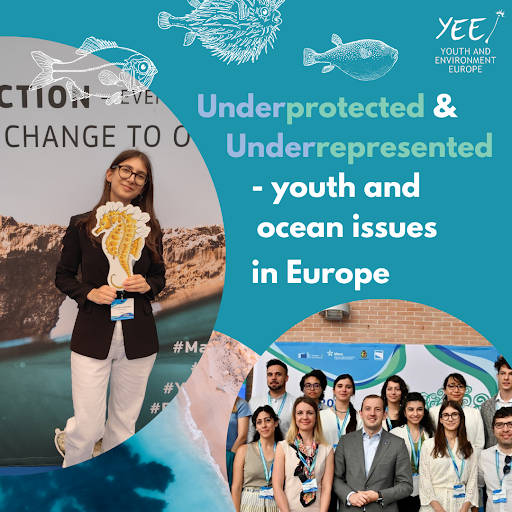
Underprotected & Underrepresented – Youth & Ocean issues in Europe | Article
https://yeenet.eu/wp-content/uploads/2022/06/featured-ocean-literacy.png 512 512 YEE https://yeenet.eu/wp-content/uploads/2018/11/logo-yee-728x1030.png YEE2022-06-07 22:12:412023-06-23 09:19:59Underprotected & Underrepresented - Youth & Ocean issues in Europe | Article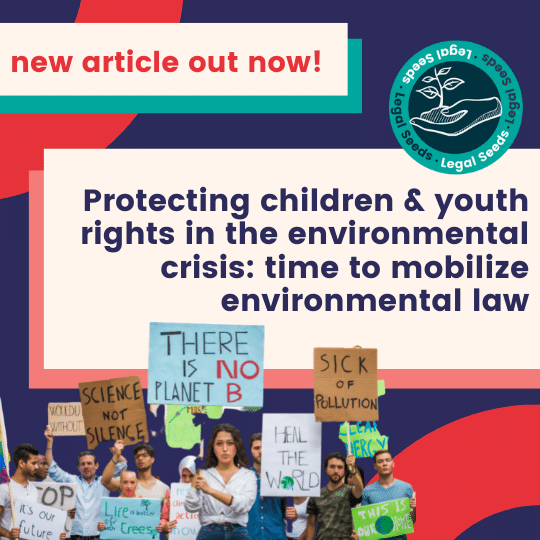
Protecting children & youth rights in the environmental crisis | Article | Legal Seeds
https://yeenet.eu/wp-content/uploads/2022/06/Env-Law-Template5.png 540 540 YEE https://yeenet.eu/wp-content/uploads/2018/11/logo-yee-728x1030.png YEE2022-06-02 16:39:132023-07-28 13:18:45Protecting children & youth rights in the environmental crisis | Article | Legal Seeds
These 5 ecosystems are goldmines for biodiversity and climate | NOWU & YEE – QUIZ
https://yeenet.eu/wp-content/uploads/2022/05/06-05_twitter.png 253 506 YEE https://yeenet.eu/wp-content/uploads/2018/11/logo-yee-728x1030.png YEE2022-05-16 10:48:052023-07-28 13:19:04These 5 ecosystems are goldmines for biodiversity and climate | NOWU & YEE - QUIZ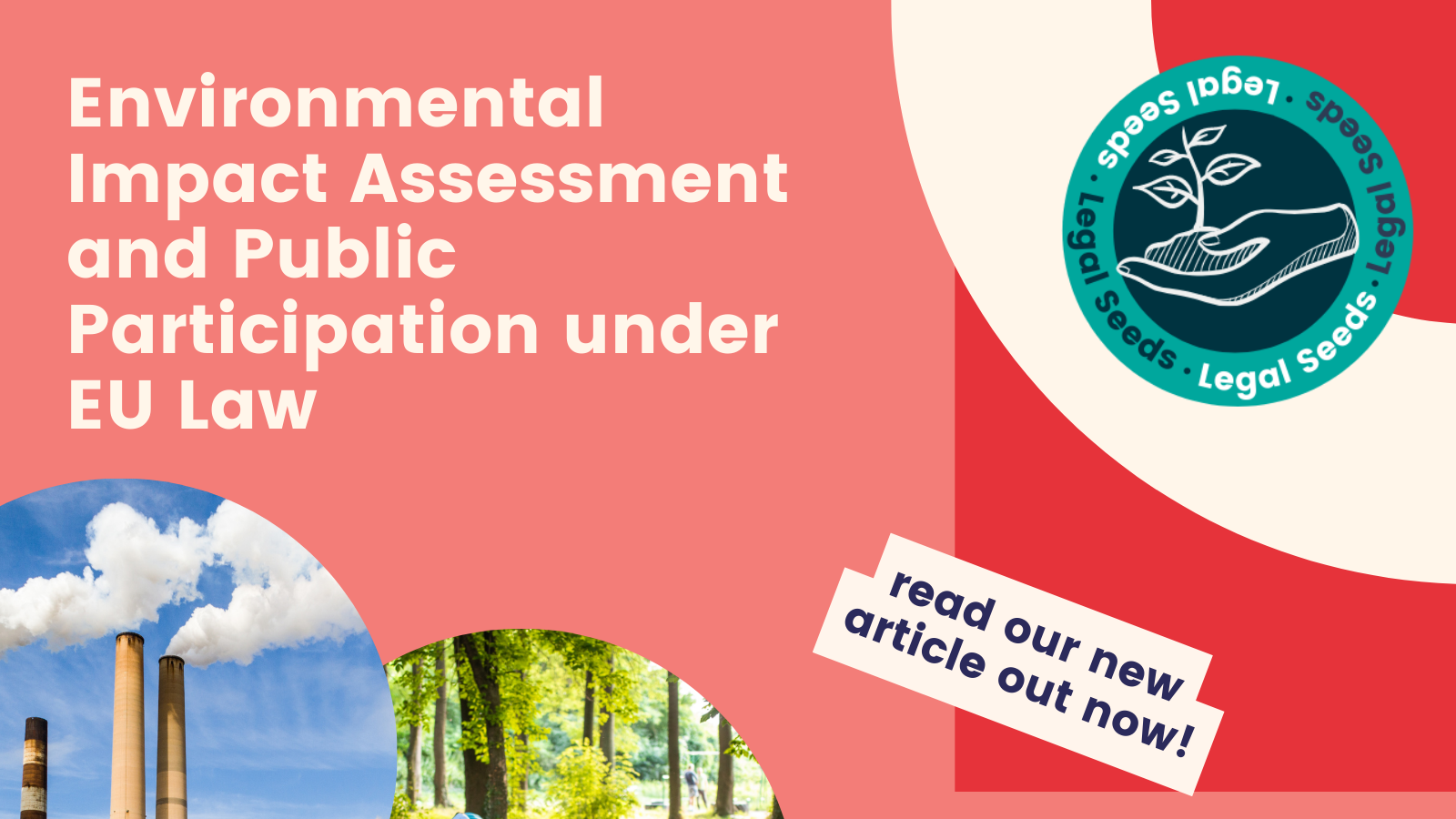
Environmental Impact Assessment and Public Participation under EU Law | Legal Seeds
https://yeenet.eu/wp-content/uploads/2022/04/EnvLaw-Workshop.png 900 1600 YEE https://yeenet.eu/wp-content/uploads/2018/11/logo-yee-728x1030.png YEE2022-04-12 16:04:242023-07-28 13:19:42Environmental Impact Assessment and Public Participation under EU Law | Legal Seeds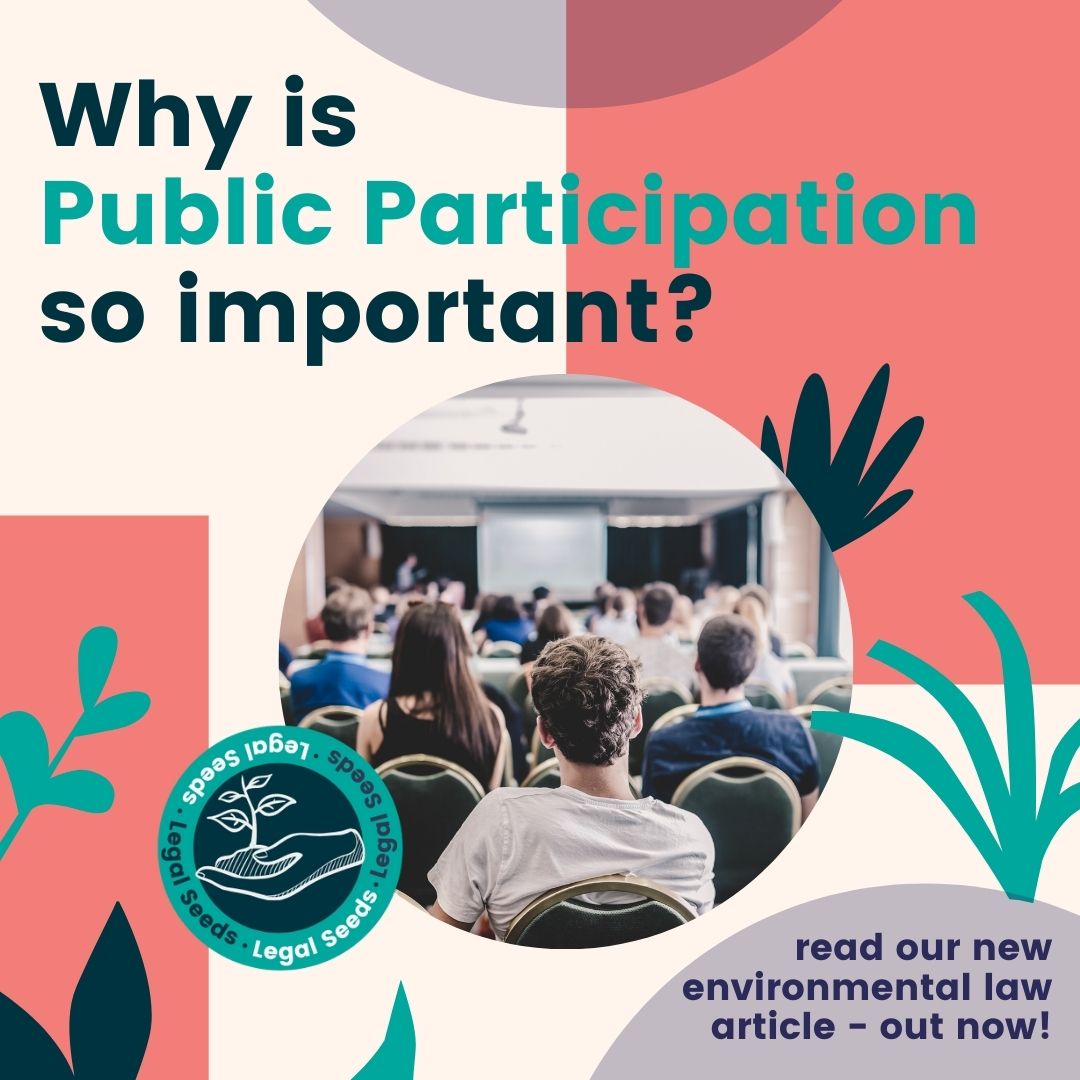
Public Participation, a way to be at the heart of environmental democratic governance | Legal Seeds
https://yeenet.eu/wp-content/uploads/2022/03/Climate-Litigation-ARTICLE.jpg 1080 1080 YEE https://yeenet.eu/wp-content/uploads/2018/11/logo-yee-728x1030.png YEE2022-03-18 13:52:032023-07-28 13:20:03Public Participation, a way to be at the heart of environmental democratic governance | Legal Seeds
Climate litigation and what follows – Putting climate litigation outcomes into practice | Legal Seeds
https://yeenet.eu/wp-content/uploads/2022/01/Climate-Litigation-ARTICLE.jpg 1080 1080 YEE https://yeenet.eu/wp-content/uploads/2018/11/logo-yee-728x1030.png YEE2022-01-31 11:33:442023-07-28 13:20:27Climate litigation and what follows - Putting climate litigation outcomes into practice | Legal SeedsOur mission
 YEE aims to unite environmental youth non-profit organisations in Europe in order to enhance international cooperation, increase knowledge about the climate crisis, raise awareness of environmental problems and to strengthen participation of youth in environmental decision-making.
YEE aims to unite environmental youth non-profit organisations in Europe in order to enhance international cooperation, increase knowledge about the climate crisis, raise awareness of environmental problems and to strengthen participation of youth in environmental decision-making.
Information
Get in touch
Vinohradská 2165/48
120 00 Praha 2 – Vinohrady
Czech Republic
E-mail: yee@yeenet.eu
We are supported by
Supported by the Council of Europe through the European Youth Foundation.
Co-funded by the European Union. Views and opinions expressed are however those of the author(s) only and do not necessarily reflect those of the European Union or the European Education and Culture Executive Agency (EACEA). Neither the European Union nor EACEA can be held responsible for them.



